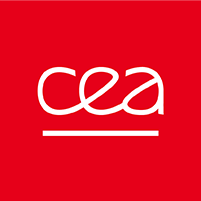The Bureau international des poids et mesures (BIPM) is developing a new transfer instrument named the quot;Extension of the International Reference Systemquot; (ESIR), based on the Triple-to-Double Coincidence Ratio (TDCR) method of liquid scintillation counting with a specific instrumentation comprising three photomultipliers. The aim is to enable international comparisons of pure beta radionuclides, certain radionuclides that decay by electron capture, and to facilitate international comparisons of alpha emitting radionuclides. The TDCR method is a primary activity measurement technique used in national laboratories. For the activity determination, its application relies on the construction of a model of light emission requiring knowledge of the energy deposited in the liquid scintillator. Depending on the decay scheme, the combination of different deposited energies can be complex, particularly when it results from electronic rearrangement following electron capture decay. The stochastic approach of the RCTD model is applied by randomly sampling the different ionizing radiation emissions following a radioactive decay. The recent addition of modules for automatically reading nuclear data (such as those available in the Table des Radionucléides) in radiation/matter simulation codes (PENELOPE, GEANT4), means that all possible combinations can be rigorously taken into account. The stochastic approach makes it possible to consider the actual energy deposited in the liquid scintillation vial, taking into account interactions in the instrumentation as a whole. The aim of this thesis is to develop a multiphysics stochastic approach using the GEANT4 radiation/matter simulation code, to be applied in particular to the BIPMapos;s ESIR system. The choice of the Geant4 code offers the possibility of integrating the transport of ionizing particles and scintillation photons. This development is of great interest for radioactivity metrology, with the aim of ensuring metrological traceability to a larger number of radionuclides with the BIPMapos;s ESIR system. The thesis will be carried out in collaboration with the Commissariat à lapos;Energie Atomique et aux Energies Alternatives (CEA), which already has experience in developing a stochastic model with the GEANT4 code for its instrumentation dedicated to the TDCR method at the Laboratoire National Henri Becquerel (LNE-LNHB).
Master 2 Physique (Rayonnements ionisants, simulations rayonnements/matière, code Geant4, langage C++)



Talent impulse, the scientific and technical job board of CEA's Technology Research Division
© Copyright 2023 – CEA – TALENT IMPULSE - All rights reserved